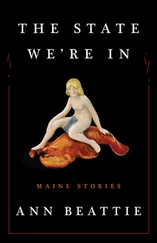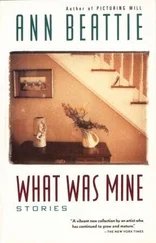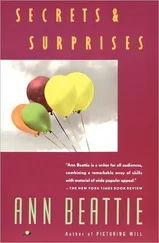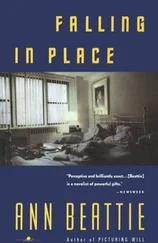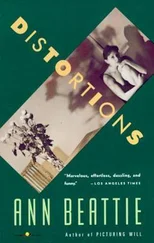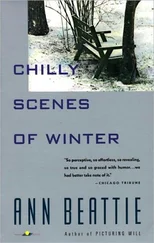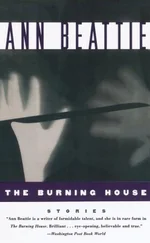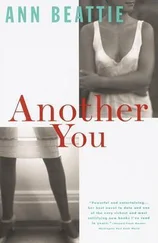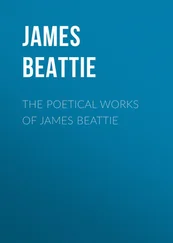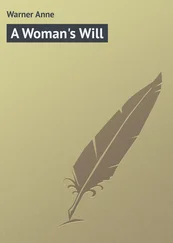There had been months of anguish after he was fired, but finally he had gotten a part-time job proofreading, and the excellent job he did with one manuscript resulted in an admiring call from an editor at the publishing house who, when she heard Haveabud’s plight, called a friend who owed her a favor, and zip, Haveabud began working part-time in a gallery on then-still-unfashionable West Broadway. The rest was history. History was personified in the form of Luther, a.k.a. Jake Markson from Brooklyn, an overweight overachiever from the Queens College art program whose talent Haveabud knew he could market. He put Luther on a protein diet and called twice a day to make sure he was drinking the daily gallon of Poland Spring. By the time showtime rolled around Jake Markson didn’t exist anymore and Luther, twenty pounds lighter, pores cleansed at Dr. Mario Badescu’s for extra radiance, stood in the gallery in his jeans and white shirt — a shirt that had cost Haveabud two hundred dollars — to start a new tremor in the downtown art scene. Around him were hung photorealistic paintings of enlarged cash-register receipts, including the smudged thumbprint of the clerk who ripped one out of the register, or the spot where it had been slightly torn, the numbers in black ink or purple, some so pale they could hardly be read. The Tx./Tl. show was the rage of the moment, pronounced upon even by Andy Warhol, who said, “Money is very important, but usually artists don’t keep good receipts.” After the opening the two-hundred-dollar shirt was handed from Luther to Haveabud the way a bullfighter folds his cape and gives it to a worthy lady. Haveabud’s cut of the sold-out show was fifty percent, and he and Luther did a pas de deux to Dean Witter Reynolds to find out about shelters. As anyone might imagine, fame went to Luther’s head. In trendy restaurants he offered to autograph the bill for the dinner he and his hangers-on had eaten, in lieu of payment. Though many places would not go for this, Luther found that star-crazed waitresses themselves would often foot the bill for the dinner in exchange for a fuck. One of those waitresses nabbed him, of course: a nobody from Lyme, Connecticut, who had come to New York to study acting — a young woman who dyed a green streak in her hair long before it was fashionable and went by the name Thalo. She became Luther’s Yoko, and eventually he was lured from Haveabud into instant obscurity, after doing a recording with Thalo that consisted of the sound of whips cracking, punctuating a two-way whispered argument, as a boys’ choir soared to high soprano in the background. The bitch got pregnant instantly and had twins. When she and Luther divorced, Luther attempted to work his way back into Haveabud’s affections, and when he could not — Haveabud believing that those who turned their back on people who had helped them did not deserve a second chance — ended up working in his brother’s restaurant, though later Haveabud heard that he had gone to Paris, to the Left Bank, where he made take-out ceviche that was praised in Le Figaro and French Vogue. Quel dommage , Haveabud said, with malice instead of sincerity.
But life is strange, and years later he became reacquainted with one of Luther’s sons. The bitch remarried — step, step, stepping up the rungs of the social ladder in her Manolo Blahniks — so that when Haveabud saw her again she was the young wife of a sixty-year-old multi, standing outside Collegiate, waiting for her son (the other twin being, for some reason Haveabud never got clear, with her parents in upstate New York), with a Cuban au pair who stood at her side, looking into the swarm of children leaving school with the wide eyes of one of her relatives fleeing Castro’s Cuba. The bitch looked Haveabud up and down and then spread an inappropriately radiant smile on her face. What was he doing there? He was about to attend a meeting, with his third wife, about her nephew’s progress in overcoming dyslexia. (His third wife’s sister was at the Betty Ford Clinic, and Haveabud had been persuaded that he should attend the meeting as a show of support to the boy.) Luther’s son turned out to be his third wife’s nephew’s classmate. His third wife emerged from a cab then and was introduced. The bitch said that she and Haveabud were old friends and invited them to dinner that Saturday, and his wife accepted. On a run, the seven-year-old boy rushed not into the bitch’s arms but into the arms of the au pair, and a most extraordinary thing happened to Haveabud: He felt a surge of tender affection for the boy. The boy was a dead ringer for his father, so much so that Haveabud had the eerie feeling that Luther in miniature stood near him on the sidewalk. It brought back memories of the good times he and Luther had had — the shopping expeditions for clothes sure to impress, when the two of them laughed so merrily that one clerk had said, as she wrote up the sale, “You know, evening wear is not returnable.” The two of them used to toke up and go for tango lessons. They had owned, together, a ski chalet in Stowe and a house on the beach in Barbados, half a mile from the Sandy Lane. They had had drunken sing-alongs with Dolly Parton records, late at night, savoring the quality of Luther’s Blaupunkt, even learning an a cappella version of “Old Flames Can’t Hold a Candle to You” that would have friends rolling on the floor. When Haveabud had to explain to his third wife who Luther was, Luther became an eccentric artist who had encountered fleeting fortune. He did not fill her in on their personal relationship. He did warn her that the bitch was poison, but she discounted his words because she thought he was always too harsh. The bitch’s lawyer and her hairstylist had been at the dinner that night, her multi out of town on business (it gave Haveabud pause: The bitch was one of those women he would have encountered years before in the bookstore, who would have given him a bottle of champagne), and she and Haveabud’s third wife chatted merrily about house renovation, agreeing that exposed beams were as necessary for aesthetic reasons as a frame on a painting. His wife was astonished to learn, during the warmed-goat-cheese-and-grapes course, that Luther and Haveabud had enrolled in an Arthur Murray dance class. The hairdresser wanted to have a dance with Haveabud, but he declined, saying that he’d forgotten everything he’d learned. (Later that night, alone in his living room after his wife had gone to bed, he went through the dance movements.) Roederer Cristal was poured throughout the evening, and at party’s end the two women kissed the air, his third wife inhaling the bitch’s Graffiti, the bitch sniffing his wife’s lavishly applied Joy. The two would meet again, to discuss ceilings.
Haveabud disdained the lawyer’s Republican politics, but since the hairdresser — whom Haveabud had rather come to like — had given him such a rough time, Haveabud had not had to expend any energy in that direction. But the child, Spencer, he was quite fascinated by. In the boy’s bedroom were hundreds of dinosaur models, some cast in bronze and arranged on a long shelf, others standing among the palm and ficus trees. An inflated Rhamphorhynchus dangled from the ceiling fixture. (“It means ‘prow beak,’ ” Spencer said.) That one Haveabud had to be informed about, but he was able to recognize the large green Stegosaurus, and he nodded with faint recognition when Spencer told him that that particular dinosaur usually weighed almost two tons. “How long have you been collecting them?” Haveabud had asked, and the boy’s answer made it clear that he would have preferred teething on dinosaurs if they had been offered in place of teething rings. Here was a child who would not plead for a pet, unlike his third wife’s nephew, who would agitate himself into weeping fits, chanting corgi, corgi, corgi. In a frame was a drawing of a Brachiosaurus, which Spencer proudly pointed out, saying it was probably the largest animal that ever lived. “It was strictly herbivorous, too,” the boy said. “Do you know what that means?” Assuming that the boy was asking if he knew, in point of fact, what “herbivorous” meant, Haveabud nodded yes. The implications, on the other hand … But the boy had rushed to pull a massive book from the shelf. “This one is about carnosaurs,” the boy said, raising his lip and exposing his little top teeth. “They were really wicked.” Haveabud was startled that the word “wicked” was in a seven-year-old’s vocabulary. He wondered if at night the dinosaurs came alive for him, ranging around the room or wading into the river of his dreams.
Читать дальше

